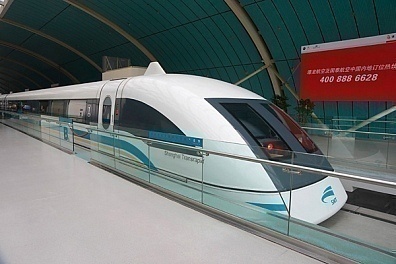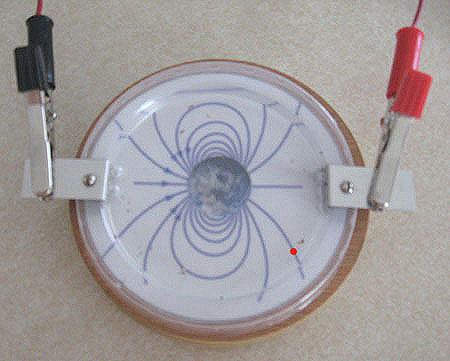Augmented reality is one of the newest innovations in the electronics industry. It superimposes graphics, audio and other sense enhancements from computer screens onto real time environments. Augmented reality goes far beyond the static graphics technology of television where the graphics imposed do not change with the perspective. Augmented reality systems superimpose graphics for every perspective and adjust to every movement of the user's head and eyes.
Development of the needed technology for augmented reality systems, however, is still underway within the laboratories of both universities and high tech companies. It is forecasted that by the end of this decade, the first mass-produced augmented reality systems will hit the market.
Components of Augmented Reality
The three basic components of an augmented reality system are the head-mounted display, tracking system and mobile computer for the hardware. The goal of this new technology is to merge these three components into a highly portable unit much like a combination of a high tech walkman and an ordinary pair or eyeglasses.
The Head-Mounted Display
The head-mounted display used in augmented reality systems will enable the user to view superimposed graphics and text created by the system. As of today, the technology nearest to augmented reality head mounts is one that is being used in virtual reality applications.
There are two basic head mount design concepts that are being researched for augmented reality systems and these are the video see-through systems and optical see-through systems.
The video see-through systems block out the user's view of the outside environment and play the image real time through a camera mounted on the head gear. The main problem with this type of system is the delay in image adjustment whenever the user moves his head.
Optical see-through systems, on the other hand, make use of technology that "paints" the images directly onto the user's retina through rapid movement of the light source. Though this system has its drawbacks, particularly its high price, researchers are confident that this system will be a lot more portable and less inconspicuous for future augmented reality systems.
Tracking and Orientation
Another component of an augmented reality system is its tracking and orientation system. This system pinpoints the user's location in reference to his surroundings and additionally tracks the user's eye and head movements. The complicated procedure of tracking overall location, user movement and adjusting the displayed graphics needed are some of the major hurdles in developing this technology. So far, the best systems developed still presents a lag or a delay between the user's movement and the display of the image.
Portable Computer
Last but not the least; augmented reality systems will need highly mobile computers. As of now, available mobile computers that can be used for this new technology are still not sufficiently powerful to create the needed stereo 3-D graphics. Graphics processing units like the NVidia GPU by Toshiba and ATI mobility 128 16MB-graphics chips are however being integrated into laptops to merge the current computer technology to augmented reality systems.
Applications of Augmented Reality Systems
The potential uses of augmented reality systems in everyday living and in various fields are many. Once available in the market, augmented reality systems will change the way people see and learn from their surroundings. Following are several applications for augmented reality systems.
Gaming and Entertainment
Augmented reality systems can be used to enhance gaming and entertainment. RPG games in the future can be integrated with augmented reality systems to give the user real environments as backdrops for his game and to make the user's senses perceive that he truly is one of the characters in the game. Sports fans will have access to up to date game information and enhancd sports viewing at home.
Education
Augmented reality systems in combination with other technologies such as WiFi could also be used to provide instant information to its users. For educational purposes, augmented reality systems can be used to view a panoramic recreation of a historical event superimposed on its real-time background. Students could use this system to have a deeper understanding on things like the formation of clouds, the structure of the universe and the galaxy, etc. through realistic and easily understandable augmented reality systems simulations.
Security and Defense
The military, particularly the Office of Naval Research and Defense Advanced Research Projects Agency or DARPA, are some of the original pioneers of augmented reality systems. One of the main uses of augmented reality systems to the military is providing field soldiers crucial information about their surroundings as well as friendly troops and enemy movements in their particular area. Augmented reality systems will also play a big role in law enforcing and intelligence agencies. This system will enable police officers to have a complete and detailed view and information about a crime scene, a patrol area, or a suspect line up.
Medicine
Medically, augmented reality systems could be used to give the surgeon a better sensory perception of the patient's body during an operation. This will result in less risky and more efficient surgical operations. The system could also be used in conjunction with other medical equipments such as an x-ray machine or an MRI to instantly give the doctors the information they need to make a medical diagnosis or decision.
Business
The building and construction field will benefit from the easier project management that augmented reality systems will bring. Markers can be placed or attached to a particular object a person is currently working on so that project and site managers can monitor work in progress. In the petroleum and mining industry, it will enable decision makers to make timely decisions. The management can decide about how ore will be mined by merely looking at the superimposition of field data fed by the geological survey team through the augmented reality systems.
Augmented reality systems can be used in almost any field or industry. The novelty of instant information coupled with enhanced perception will ensure that augmented reality systems will play a big role in how people live in the future.




Tanushree
Very helpful…
fern
I am still waiting for the reference information on this site. Will really appreciate if this could be given.
gostate
You don’t need an author to reference a source.
Aisha
I ant to reference this page, can I get the name of the writer please
fern
I will also like to reference this page and will love to get the authors name. Thank you